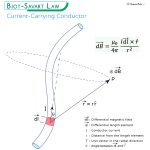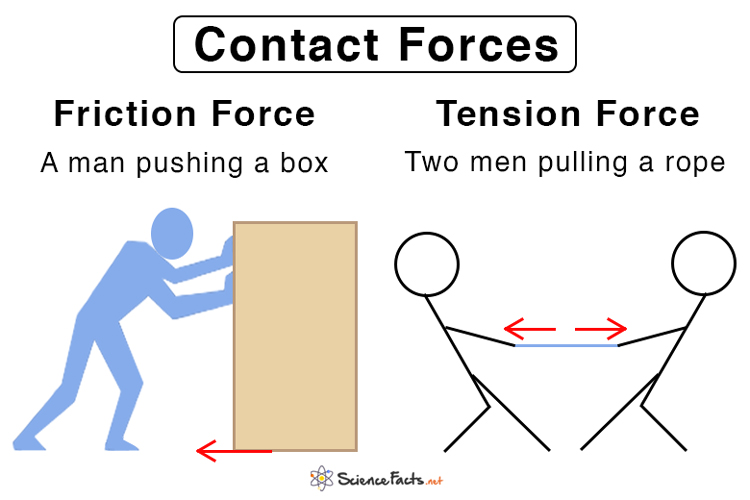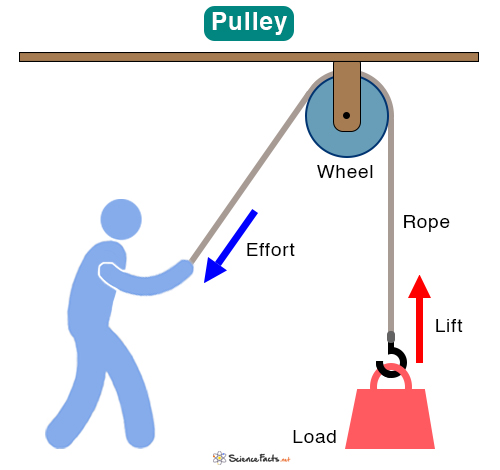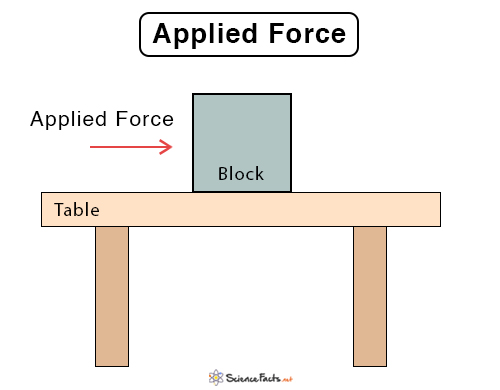Work-Energy Theorem
The Work-Energy Theorem is a concept in physics related to the dynamic motion of objects. It states that the work done on an object is equal to the change in its kinetic energy. This means that if you apply force to an object, you either speed it up or slow it down, depending on the direction of the force. For example, when you press the brakes on a car, the brakes work to slow the car down, reducing its kinetic energy.
This theorem helps us understand how forces affect motion easily without always needing to use complicated equations. Instead of analyzing the force of friction, air resistance, or other forces in detail, we can calculate how much work is done by all the forces combined and find out how the object’s speed changes.
Understanding Work-Energy Theorem Through Examples
To understand the Work-Energy Theorem better, imagine you are pushing a box across the floor. When you push, you apply a force to the box, and it starts to move. The force you apply is transferred to the box in the form of work, and this work causes the box to gain kinetic energy, meaning it speeds up. The more force you apply or the farther you push the box, the more work is done and the faster the box moves.
Let’s look at another example – throwing a ball. When you throw a ball, you apply force to it with your hand. The force you use to throw the ball is transferred into work, and this work increases the ball’s kinetic energy. The faster you throw the ball, the more work you have done and the more kinetic energy it gains. As the ball moves through the air, it is still carrying that kinetic energy, and this is what keeps it moving until something (like gravity or air resistance) slows it down.
Mathematical Representation
The Work-Energy Theorem states that the net work done on an object is equal to the change in its kinetic energy. Mathematically, the Work-Energy Theorem can be written as:
Wnet = ΔKE
Where:
– Wnet: the total work done on the object
– ΔKE is the change in kinetic energy of the object
Kinetic energy (KE) is given by the formula:
KE = ½ mv2
Where:
– m: mass of the object
– v: velocity of the object
It is important to note that the net work is the total work done by all forces acting on the object. If multiple forces act on an object, we must consider the overall effect of all these forces to determine how the kinetic energy changes.
Mathematical Derivation
To understand how the Work-Energy Theorem is derived, we can start with Newton’s Second Law of Motion. Newton’s Second Law tells us that the force (F) acting on an object is equal to the object’s mass (m) multiplied by its acceleration (a):
F = ma
Now, acceleration is the rate of change of velocity (v) over time (t). So, we can rewrite acceleration as:
a = Δv/Δt
Now, the force can also be written as:
F = m Δv/Δt
Next, we can look at work. Work is defined as the force applied over a distance. If the force is acting in the direction of motion, the work done by the force is:
W = F Δx
Where Δx is the distance moved by the object, which is the velocity multiplied by the time interval.
Δx = v Δt
As the object moves, its velocity changes, so we can use the velocity to relate force and distance. Therefore, combining these ideas, we can substitute for force in the work equation:
W = m Δv/Δt v Δt
The Δt terms cancel out, leaving us with:
W = m v Δv
This equation tells us that the work done on an object is related to the change in its velocity.
Now, to find the total work, we need to convert Δv to dv and integrate this equation:
W = ∫m v dv
Solving this integral gives:
W = ½ m (vf2−vi2)
=> W = ½ m vf2 – ½ m vi2
=> W = KEf − KEi = = ΔKE
Where vi and vf are the initial and final velocities of the object, KEf and KEi are the initial and final kinetic energies.
This is the Work-Energy Theorem.
Solved Problems
Problem 1: A person pushes a 10 kg box on a frictionless surface with a force of 20 N over a distance of 5 meters. If the box starts from rest, what will be its final speed?
Solution
We use the Work-Energy Theorem:
Wnet = ΔKE
The work done by the force is:
W = F x d = (20 N)(5 m) =100 J
Since the box starts from rest, its initial kinetic energy is:
KEi = ½ m vi2 = ½ (10)(0)2 = 0 J
The final kinetic energy is:
KEf = KEi + W = 0 + 100 = 100 J
Now, using the kinetic energy formula:
KEf = ½ m vf2
=> 100 = ½ (10) vf2
=> vf2 = 20
=> vf ≈ 4.47 m/s
The final speed is approximately 4.47 m/s.
Problem 2: A 1000 kg car is moving at a speed of 20 m/s. The driver applies the brakes, which exert a force of 5000 N to stop the car. How far does the car travel before stopping?
Solution
We use the Work-Energy Theorem:
Wnet = ΔKE
The initial kinetic energy of the car:
KEi = 12 m vi2 = ½ (1000)(20)2 = 200000 J
Since the car stops, the final kinetic energy is:
KEf = 0
The work done by the braking force is:
W = – F d
The negative sign comes in because the force is acting opposite to the motion.
W = − (5000) d
From the Work-Energy Theorem:
W = KEf – KEi
=> −5000d = 0 − 200000
=> d = 40 m
The car travels 40 meters before stopping.
-
References
Article was last reviewed on Saturday, February 8, 2025








